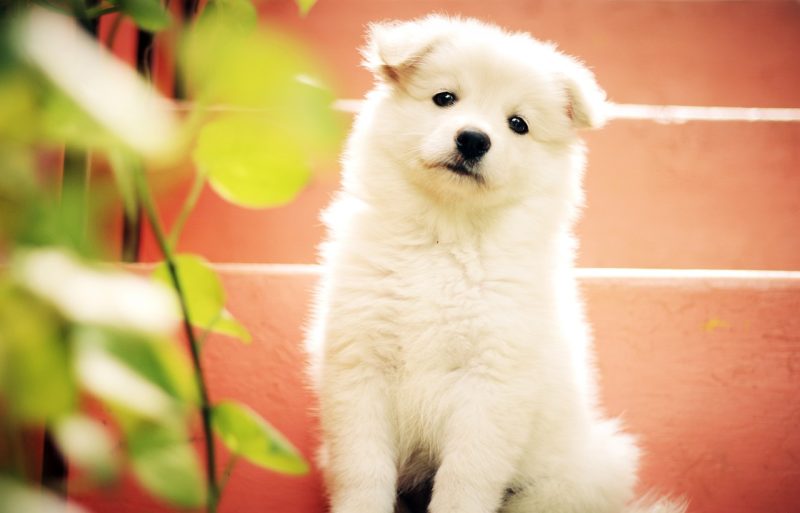
Anxious Dog Breeds
If you think your dog has anxiety issues, wait until you see these exceptionally nervous breeds. From obsessive herding behaviors to panicked reactions to noises, these popular yet anxious dogs take stress to the next level. Find out if your breed made the list and how to help them find inner peace. Or for first-time dog owners considering an anxious dog breed, great insight on the breed’s specific needs and potential challenges await. You’ll be able to confidently navigate the challenges and joys of welcoming a pup more prone to anxiety in your home. Before we get into it, it’s important to know that all dogs, much like humans, are susceptible to anxiety.
Identifying Anxiety in Dogs
Here are the most common signs of anxiety in dogs:
- Excessive panting even when it’s not hot
- Pacing or shaking for no apparent reason
- Hiding under or behind furniture
- Whining or barking at any small noise
- Loss of appetite or digestive issues
- Aggression or unusual snapping when approached
Paying attention to your dog’s body language is key. An anxious dog might have a tucked tail, flattened ears, wide eyes, and a tense body. If you notice these anxious behaviors regularly, your dog may struggle with anxiety.
Types of Anxious Dog Breeds
While any dog can develop anxiety, some breeds are genetically more prone. Breeds that tend to be more anxious include:
High Energy Breeds
Energetic pups like Border Collies, Australian Shepherds, Jack Russell Terriers, and Cattle Dogs have an abundance of energy and intelligence. Without enough physical and mental stimulation, these traits can manifest as anxiety.
Working Breeds
Breeds bred for police, military, guarding and herding work – like German Shepherds, Doberman Pinschers, and Belgian Malinois – are inclined to feel the pressure. Anxiety is their way of channeling high drive and sensitivity.
Sensitive Breeds
Dogs with natural sensitivity like Cavalier King Charles Spaniels, Papillons, Chihuahuas and Yorkshire Terriers have a lower threshold for stress. Small things can set off their anxiety.
Regardless of breed, any dog can develop anxiety issues. Paying attention to your dog’s unique personality and needs is more important than breed categorization. Despite their susceptibility to anxiety, these dogs have many wonderful qualities. In fact, all of the anxious dog breeds listed here made the list of the most popular dog breeds of 2023.
Managing Anxiety in Canines
If your pup seems anxious, don’t panic. There are many things you can do to help them feel more at ease.
- Daily Exercise. Make sure your dog gets adequate exercise every day. Tiring them out physically will produce more relaxation.
- Mental Stimulation. Provide interactive toys and puzzles to occupy your dog’s intelligent mind. A mentally tired dog is a calm dog.
- Create a Safe Space. Designate a quiet, comfortable area just for your dog to retreat to when feeling anxious. This should be a low traffic area, away from household chaos.
- Try Calming Aids. Pheromone diffusers, calming treats, Thunder Shirts and CBD oils can all help take the edge off. Find what works best for your pup.
- Stick to a Routine. Consistency in daily schedules and routines can have a stabilizing effect. Dogs thrive when they know what to expect.
Creating a Safe Space
A designated safe space gives anxious dogs a secure spot to retreat when the world feels overwhelming. This quiet, comfortable zone serves as a den-like area just for them.
- Location. Choose a low traffic area on a lower level of your home away from most household activity. A spare room, laundry room or corner of the basement can work well.
- Containment. Use a pen, crate or baby gate to create clear boundaries so they feel sheltered. The space should allow them to sit, stand, lie down and turn around comfortably.
- Bedding. Ensure the area has warm, cozy bedding that smells familiar. Use their favorite blanket or your lightly worn t-shirt. The comforting scent helps them relax.
- Toys. Provide durable chew toys to relieve stress. Frozen Kongs smeared with peanut butter or puzzle toys with treats provide mental distraction.
- Visibility. Allow lines of sight to entrances but make sure the space feels enclosed. This gives them security while still allowing them to survey their surroundings.
- Accessibility. Always keep the safe space available. Many anxious dogs will intuitively retreat there when feeling uneasy or overstimulated. Honor that impulse and allow them to settle in solitude.
Behavioral Training
While creating a safe space is important, you’ll also want to address the root of your dog’s anxiety through training. This can help them gain confidence and learn coping skills.
- Obedience Training. Basic obedience like sit, stay, come, down and heel helps establish you as a clear, trusted leader. This structure is calming. Practice 5-10 minutes daily.
- Counterconditioning. Slowly reframe scary triggers into positive experiences using high-value treats. Associate the trigger with good things happening.
- Desensitization. Gradually expose your dog to anxiety-inducing situations lightly at first. Go slow allowing them to acclimate while keeping their stress levels low.
- Confidence Building. Set up activities designed to make your dog feel brave and bold. These can include nose work games, obstacle courses or learning new tricks.
- Medication. For severe anxiety cases, your veterinarian may prescribe anti-anxiety medication or antidepressants to help while also continuing behavioral training.
Be patient and consistent with anxiety-reduction training. With time, the right tools and your loving guidance, an anxious dog can come out of their shell. Your once skittish pup will transform into a happier, well-adjusted canine.
Frequently Asked Questions
What causes anxiety in dogs?
Anxiety in dogs can stem from lack of socialization, negative past experiences like abuse or abandonment, genetic predisposition, physical health issues, or environmental stressors like loud noises. There is no one size fits all. There are anxious dog breeds, but the risk can be mitigated by paying attention is the signs and triggers.
How is dog anxiety diagnosed?
Veterinarians diagnose dog anxiety by asking detailed questions about your dog’s behavior, ordering diagnostic tests to rule out medical conditions, and observing your dog in the exam room and at home.
What medications help dog anxiety?
Some medications vets may prescribe for dog anxiety include fluoxetine, clomipramine, benzodiazepines like alprazolam, and natural therapies like dog-safe CBD oils.
How do Thunder Shirts work?
Thunder Shirts apply gentle, constant pressure that has a calming effect like swaddling an infant. This pressure stimulates the release of serotonin, endorphin and oxytocin – chemicals that promote relaxation.
What essential oils help anxious dogs?
Lavender, sweet orange, chamomile, frankincense and cedarwood essential oils can have a soothing effect. Always dilute oils before use and check that oils are dog friendly.
With some adjustments to their environment, lifestyle and your attentive care, an anxious dog can overcome their stress. Pay attention to your pup, advocate for their needs, and provide compassion. This collaborative approach will help transform an anxious canine into a happier best friend.


